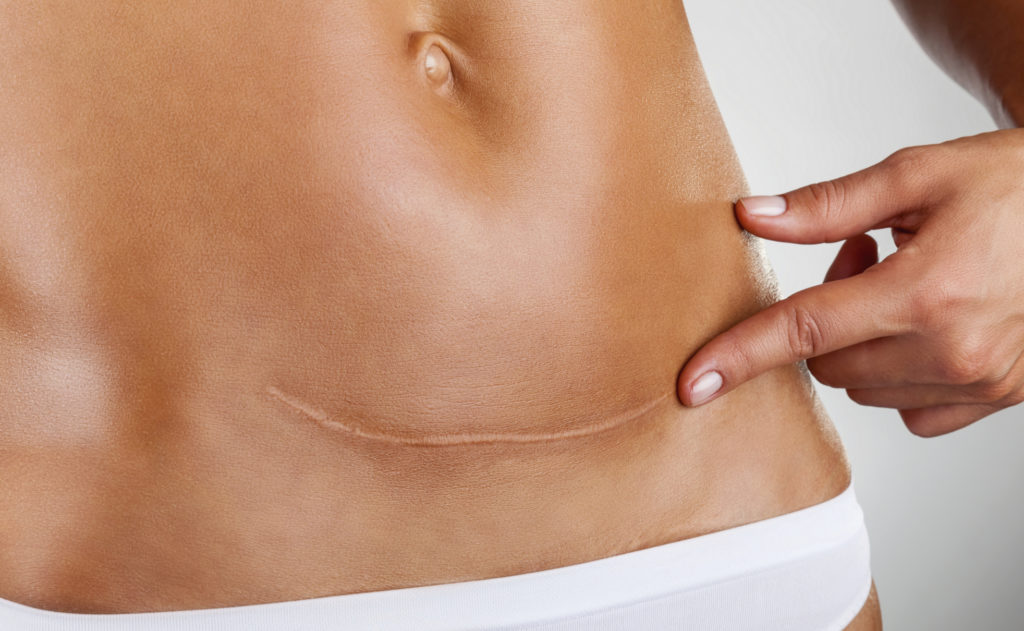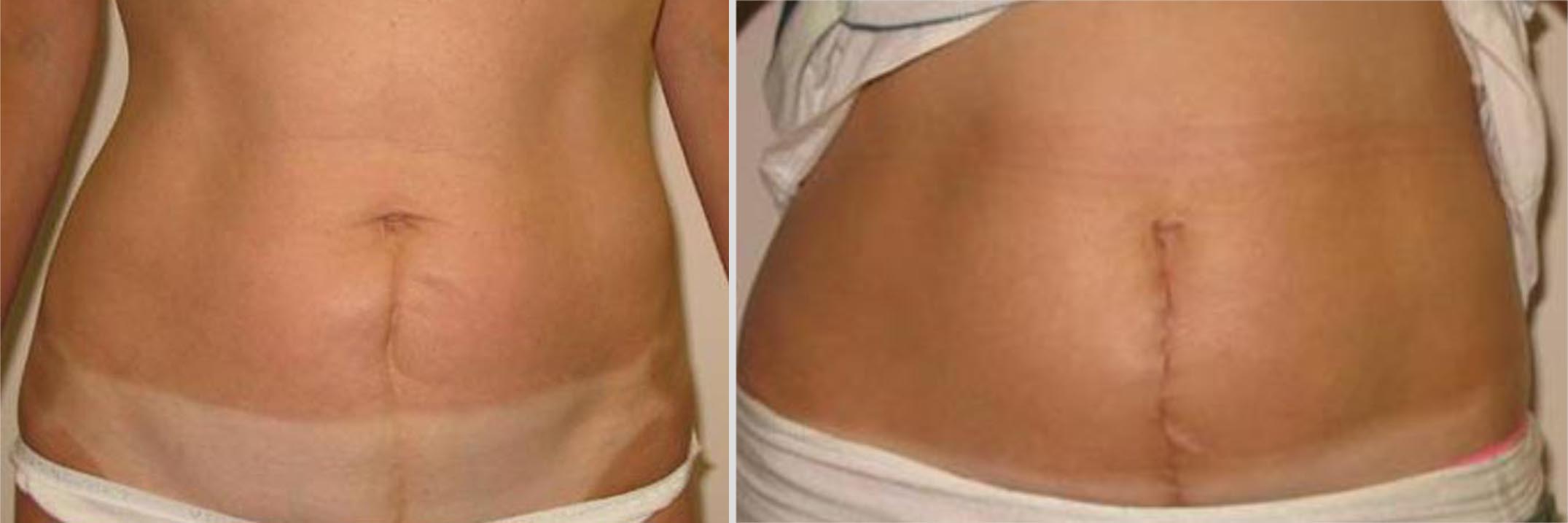Sing Ho! for this helpful and anatomically detailed look at C-section scars from Anatomy Angel Dr. Dooley.
For us bodyworkers, we can help re-establish proper balance in the intra-abdominal pressure (IAP) and pelvic floor using the following:
To gently free a horizontal scar: Place your client seated on a bench or chair, hips slightly higher than the knees. Presumably you have obtained permission and know your client well enough to do the following. (Better also if they empty their bladder first).

Bring your fingers in over the pubic bone and pin the scar down to the top of the pubic bone and symphysis. If there are obvious hard bits within the scar, make sure those are firmly held between your fingers and the bone. If the scar has no obvious fibrous adhesions, then be sure to get both ends of the scar beneath your fingers – the ends are where adhesions often link. (Of course it’s possible to do the move several times in different finger positions.)
With the most restrictive part of the scar pinned to the bone, ask the client to slowly turn their torso right and left, so that the tissue under your fingers is stretched up and out toward the shoulder that’s going back. I usually have them put their hands on opposite shoulders for this move, but you can get additional stretch by having them put their arms up in a V.
Caution them to move slowly – a fast, snapping turn could actually tear tissue under your fingers. For most it will be ‘sensational’, so they can control the feeling by how fast and how far they turn – you as practitioner are staying fairly still, while they create the stretch with their movement. Keep it slow and aware.
If you have them do a Valsalva manoeuvre pre- and post-, they will be able to feel the more even distribution of pressure to the pelvic floor.
To free a vertical cut: More difficult for the practitioner. Reach into the belly on either side of the scar at the outside edge of the rectus abominis. Try to bring your fingers together at their midline behind the scar and behind the muscle – not easy on the obese client, but worth a few tries to get in behind the tissue. If you just have a wedge of superficial fat between your fingers the technique will not be as effective. Have them cough or ‘bear down’ to see if you have the muscle in hand.

Use the same movement – a slow swing through the range of rib cage motion from right to left and beck again. It takes more strength on the practitioner’s part to keep this hold with a vertical scar, but the results in freedom of motion and the lifting of sensorimotor amnesia around the scar are definitely worth it.
Not every C-section scar creates serious restriction, but post-treatment for the scar is rare, and movement restriction is common. A few minutes work, if you have the trust of the client, can make a lot of difference in athletic ability, urine retention, and the sense of being whole.





